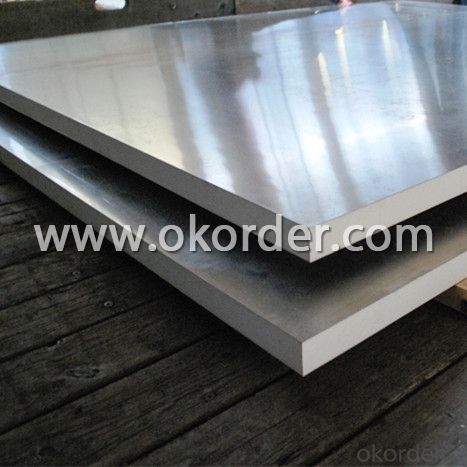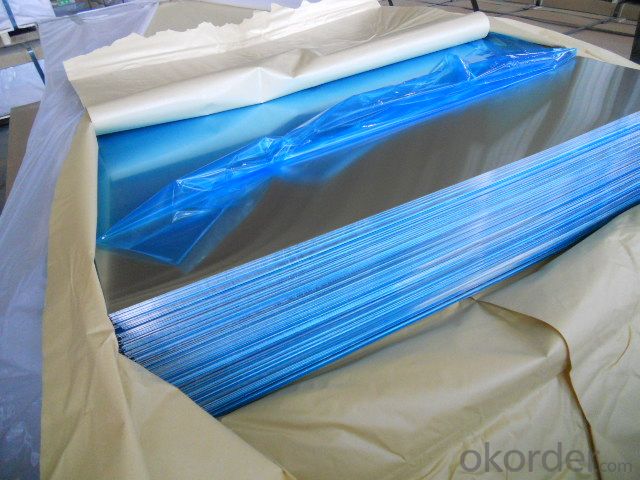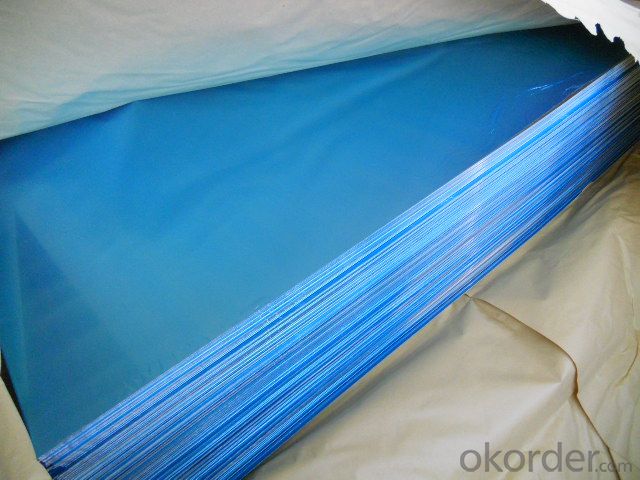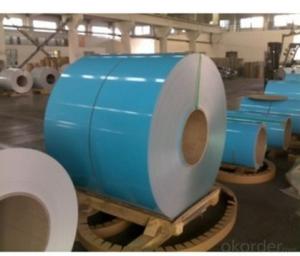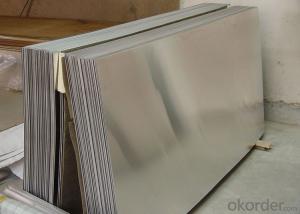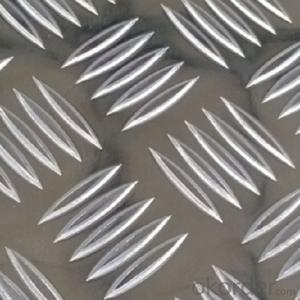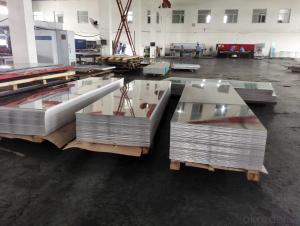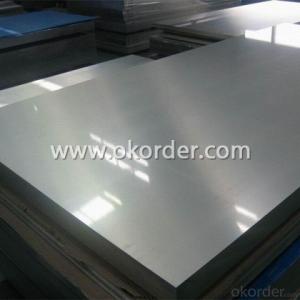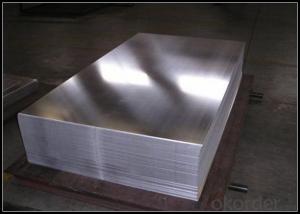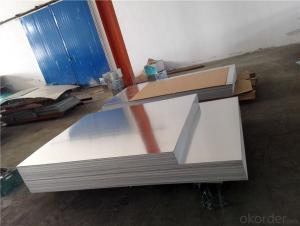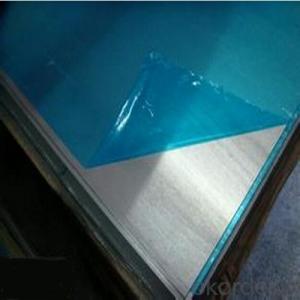Wholesale Sublimation Aluminum Sheets for Semi-Unitized Curtain Wall
- Loading Port:
- Shanghai
- Payment Terms:
- TT or LC
- Min Order Qty:
- 5 m.t.
- Supply Capability:
- 100000 m.t./month
OKorder Service Pledge
OKorder Financial Service
You Might Also Like
1.Structure of Aluminium Sheets for Semi-Unitized Curtain Wall
Aluminium Sheets for Semi-Unitized Curtain Wall are one type of non-frame curtain wall than consist of glass panels, point-fixing components on such panels and their supporting structures. .
Aluminium Sheets for Semi-Unitized Curtain Wall are good at ductility, heat conductivity, anti-corrosion and moisture resistance. They are widely used in roofing, electronics, instruments, lighting decoration, packing, decoration, curtain wall, sandwich panels, boats, etc.
2.Main Features of Aluminium Sheets for Semi-Unitized Curtain Wall
•High intensity
•Easy to be processed and shaped
•Weather resistance
•Anti-pollution & environment protection
3. Aluminium Sheets for Semi-Unitized Curtain Wall Images
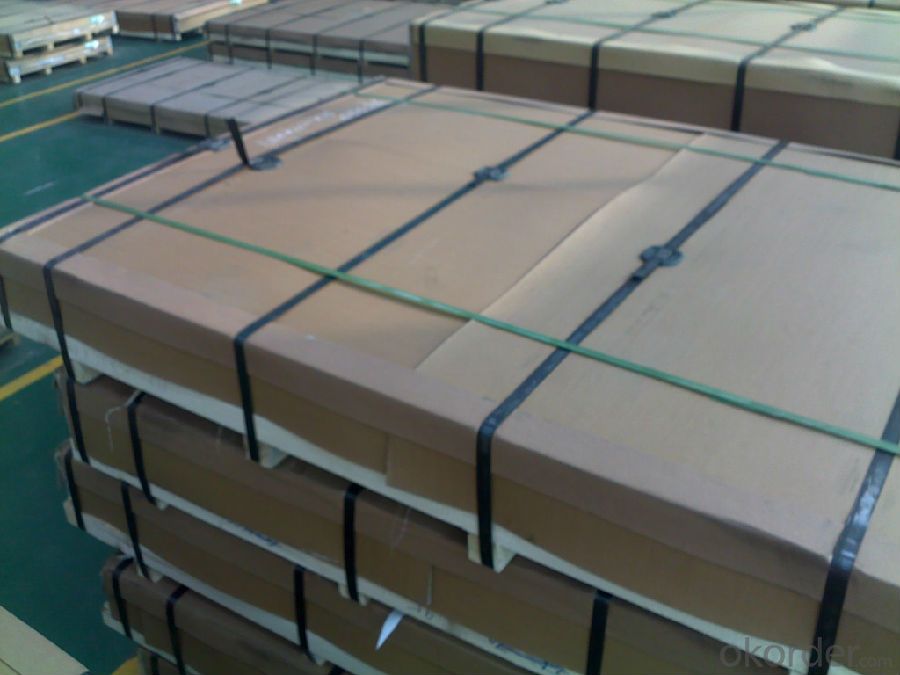

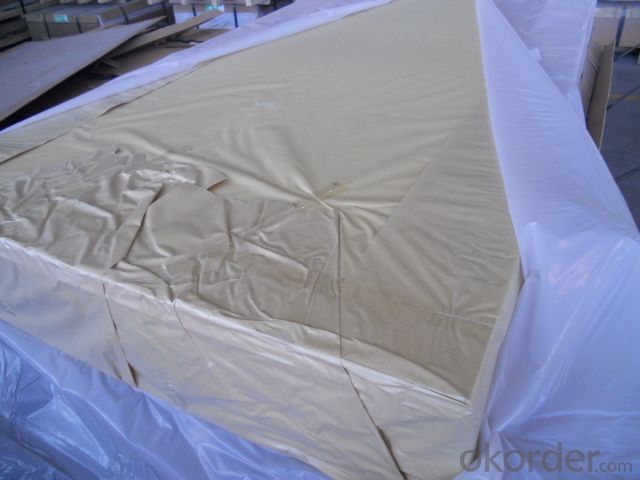
4.Specification of Aluminium Sheets for Semi-Unitized Curtain Wall
Alloy | AA1050,AA1060, AA1070, AA1100 |
Temper: | H12, H14, H16, H18, H22, H24, H26, H32,HO, F |
Thickness: | 0.10-500mm |
Width: | 10mm- 2200mm |
Standard: | GB/T3880-2006, ASTM, ISO, EU standard |
Special Specification is available on customer’s requirement | |
5.FAQ
A.What about inspections to guarantee quality?
For each order, we will arrange strict inspection for raw materials, inspection during production and inspection for finished goods.
With requirement of customers, we also can arrange the third party inspection.
B.What about delivery?
We will put order in production schedule after order gets confirmed against copy of TT or L/C. Normally it takes about one month for production. Exact shipment schedule is different based on different sizes and quantity.
C.What is the MOQ?
5 tons for each size.
D. Where have you exported?
We have exported to many countries. Main markets include South East Asia, Middle East, North America, South America, etc.
- Q: How do you join aluminum sheets together?
- To join aluminum sheets together, there are various methods available depending on the specific application and desired joint strength. The following techniques are commonly used: 1. Welding: Aluminum can be welded using gas tungsten arc welding (GTAW or TIG), gas metal arc welding (GMAW or MIG), or laser welding. These processes involve melting the aluminum at the joint and introducing a filler material to create a strong bond. Welding offers excellent strength and durability, but it requires skill and suitable equipment. 2. Riveting: Aluminum sheets can be fastened together using rivets. This technique involves drilling holes through the sheets and using a rivet gun to insert and deform a rivet, creating a secure joint. Riveting is a relatively simple and quick method, but its strength may not match that of welding. 3. Adhesive bonding: Industrial adhesive bonding is a popular method for joining aluminum sheets. Specialized adhesives formulated for aluminum bonding are applied to the surfaces, which then cure and form a strong bond. Adhesive bonding is advantageous as it evenly distributes stress and can join dissimilar materials. However, it may not be suitable for high-temperature or high-stress applications. 4. Mechanical fasteners: Aluminum sheets can be fastened together using screws, bolts, or nuts. This involves drilling holes and using fasteners to secure the sheets. Mechanical fasteners provide good strength and allow for disassembly if needed. However, they may require additional maintenance and can cause stress concentrations around the holes. 5. Clinching: Clinching is a cold joining method where aluminum sheets are pressed together using a punch and die. This process deforms the materials and creates a mechanical interlock, resulting in a strong joint. Clinching is a quick and cost-effective method, although it may not be suitable for thin or highly rigid sheets. Ultimately, the choice of joining method depends on factors such as the required strength, aesthetics, cost, and ease of fabrication. It is advisable to seek guidance from a qualified professional or follow specific guidelines to ensure a successful and reliable joint.
- Q: Can aluminum sheets be used for solar panels?
- Yes, aluminum sheets can be used for solar panels. Aluminum is a commonly used material in the construction of solar panels due to its lightweight, durability, and excellent heat dissipation properties. The use of aluminum helps to reduce the overall weight of the solar panels, making them easier to install and transport. Additionally, aluminum is highly resistant to corrosion, ensuring the longevity of the solar panels even in harsh weather conditions.
- Q: What is the dielectric strength of aluminum sheets?
- The dielectric strength of aluminum sheets is typically around 20-30 kilovolts per millimeter (kV/mm).
- Q: Can 101 aluminum sheets be anodized for medical equipment applications?
- Yes, 101 aluminum sheets can be anodized for medical equipment applications. Anodizing is a process that enhances the corrosion resistance and durability of aluminum, making it suitable for various industries, including medical equipment.
- Q: on an hot day, which will stay cooler longer...aluminum, or copper? why?thanks!
- Copper is a better conductor of both heat and electricity so it will get hotter faster at least until it oxidizes and turns green
- Q: What are the different methods of surface cleaning for adhesive bonding of aluminum sheet?
- There are several methods of surface cleaning for adhesive bonding of aluminum sheet. These methods include mechanical cleaning, chemical cleaning, and plasma cleaning. 1. Mechanical Cleaning: This method involves physically removing any contaminants or debris from the surface of the aluminum sheet. It can be done using various techniques such as sanding, grinding, or scrubbing with abrasive materials. Mechanical cleaning is effective in removing loose particles and surface imperfections, but it may not be able to eliminate all types of contaminants. 2. Chemical Cleaning: Chemical cleaning involves the use of specific cleaning agents or solvents to remove contaminants from the aluminum surface. These cleaning agents can dissolve or dislodge dirt, grease, oil, or other organic substances. Chemical cleaning is often combined with mechanical cleaning to ensure thorough surface preparation. It is important to choose a cleaning agent that is compatible with both the adhesive and the aluminum sheet to avoid any adverse reactions. 3. Plasma Cleaning: Plasma cleaning is a more advanced method that uses ionized gases to clean and activate the surface of the aluminum sheet. The plasma generates reactive species that can break down and remove contaminants from the surface, while also creating active sites for better adhesion. Plasma cleaning is effective in removing organic and inorganic contaminants, as well as oxide layers that may hinder bonding. Each method has its advantages and limitations, and the choice of surface cleaning method depends on the specific requirements of the adhesive bonding process. It is important to carefully evaluate the surface condition and the type of contaminants present to determine the most suitable cleaning method. Additionally, proper surface preparation techniques should be followed to ensure successful adhesive bonding of aluminum sheet.
- Q: Are aluminum sheets resistant to vibration?
- Yes, aluminum sheets are generally resistant to vibration. Aluminum is a lightweight and flexible material that has good damping properties, meaning it can absorb and dissipate vibrations. Additionally, aluminum has a high strength-to-weight ratio, which allows it to retain its structural integrity even when subjected to vibrations. This makes aluminum sheets a popular choice in industries such as aerospace, automotive, and construction, where vibration resistance is important. However, it is worth noting that the specific resistance to vibration may vary depending on factors such as the thickness and alloy of the aluminum sheet, as well as the intensity and frequency of the vibrations.
- Q: Can aluminum sheets be used in construction?
- Yes, aluminum sheets can be used in construction. They are commonly used for roofing, siding, and structural applications due to their lightweight, corrosion-resistant, and durable properties.
- Q: What are the different methods of surface cleaning for aluminum sheet?
- There are several methods for cleaning aluminum sheets, each with its own advantages and suitability for different situations. Some of the common methods include: 1. Mechanical Cleaning: This method involves using abrasive materials, such as sandpaper or wire brushes, to physically scrub away dirt, oxidation, or other contaminants from the surface of the aluminum sheet. Mechanical cleaning is effective for removing heavy stains or corrosion, but it may leave scratches on the surface. 2. Chemical Cleaning: Chemical cleaning involves using various cleaning agents or solvents to dissolve and remove dirt, grease, or oxidation from the aluminum sheet. These cleaning agents can be acidic, alkaline, or neutral, depending on the specific requirements. Chemical cleaning is often used for removing light stains or surface oxidation, and it is suitable for large-scale cleaning operations. 3. Electrolytic Cleaning: This method uses an electric current to remove contaminants from the surface of the aluminum sheet. The sheet is immersed in an electrolyte solution, and the application of a direct current causes the contaminants to dissolve and separate from the surface. Electrolytic cleaning is effective for removing heavy oxidation, corrosion, or stubborn stains. 4. Ultrasonic Cleaning: Ultrasonic cleaning involves placing the aluminum sheet in a tank filled with a cleaning solution and subjecting it to high-frequency sound waves. These sound waves create tiny bubbles in the cleaning solution, which collapse upon contact with the surface of the sheet, dislodging dirt particles. Ultrasonic cleaning is suitable for removing fine particles, oils, or grease from the surface of the aluminum sheet. 5. Steam Cleaning: Steam cleaning utilizes high-pressure steam to remove dirt, grime, or contaminants from the surface of the aluminum sheet. The high temperature and pressure of the steam break down the dirt particles and sanitize the surface. Steam cleaning is effective for removing oils, greases, or organic residues from the sheet. When selecting a cleaning method for aluminum sheets, it is essential to consider the nature and severity of the contamination, the desired level of cleanliness, and the specific requirements of the application. It is also important to follow safety guidelines and use appropriate protective equipment when handling cleaning agents or working with electrical equipment.
- Q: Is there any reason to believe flushing aluminum foil down the toilet is a bad idea?
- Yeah, and caustic soda will also eat the flesh off your bones. Then it will eat your bones for good measure. There's no reason or logic in flushing down aluminum. Yes it's a bad idea. It should be recycled along with your aluminum cans. If you don't believe me, go ahead and flush it. See what happens. I might just be getting a call from you..
Send your message to us
Wholesale Sublimation Aluminum Sheets for Semi-Unitized Curtain Wall
- Loading Port:
- Shanghai
- Payment Terms:
- TT or LC
- Min Order Qty:
- 5 m.t.
- Supply Capability:
- 100000 m.t./month
OKorder Service Pledge
OKorder Financial Service
Similar products
Hot products
Hot Searches
Related keywords



